
Everything in this slideshow
-
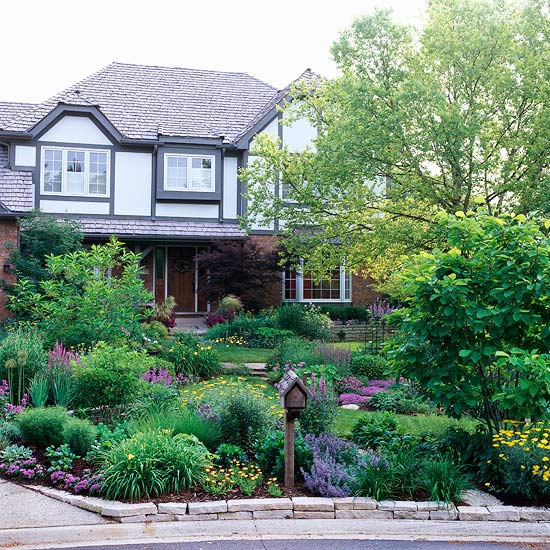
Consider Color
If your home is neutral in color, choose a limited color scheme for your landscape to add visual appeal. Rich purple plants are great choices for beige, gray, or white homes; soft yellow is a beautiful accent. For a bolder presentation, select red flowers and accent them with splashes of white blooms or silver foliage.
- Check out our front yard garden plans!
-
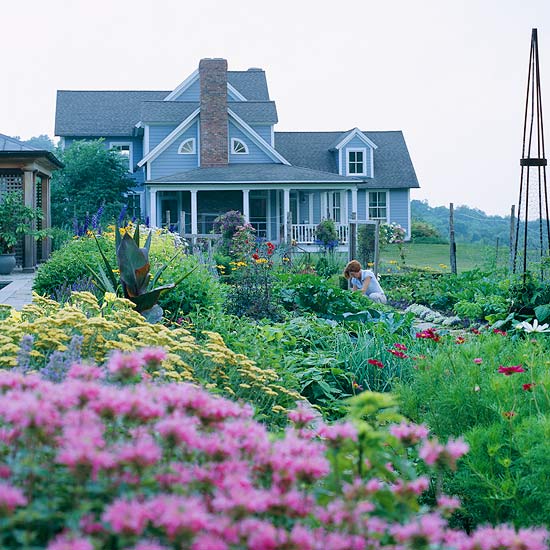
Let Color Be Your Guide
If your home’s color scheme stands out, grow flowers and foliage that pairs well with it. For example, purple and pastel yellow look beautiful against a soft blue home. Or try a cohesive design, such as yellow flowers with a yellow house.
- Check out guide to garden color.
-
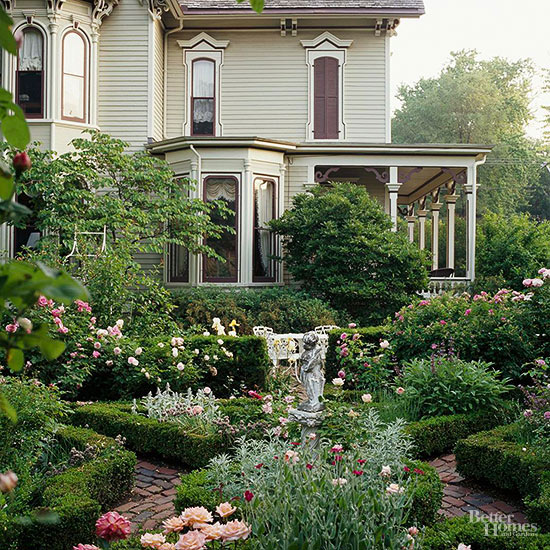
Stay with the Style
House color is an easy place to start for landscaping inspiration. But the architectural style may also provide ideas for plantings. For example, if you have a Victorian home as shown here, a formal garden with low clipped boxwood hedges would be a natural fit.
- Find even more front yard landscaping ideas.
-
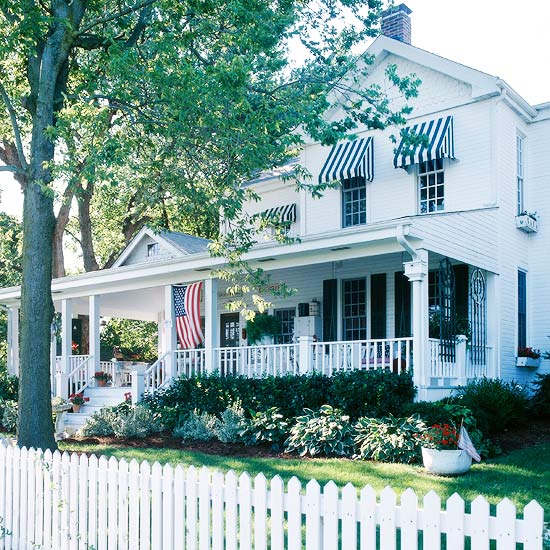
Go Traditional
For a traditional-style home, the classic look — a white picket fence, tidy evergreen foundation plantings, and a few planters on the front porch — is a simple way to add landscape impact.
If you want to take it up a notch, try growing clematis or climbing roses up a fence or plant flowering evergreen shrubs, such as dwarf rhododendrons, along the foundation.
-
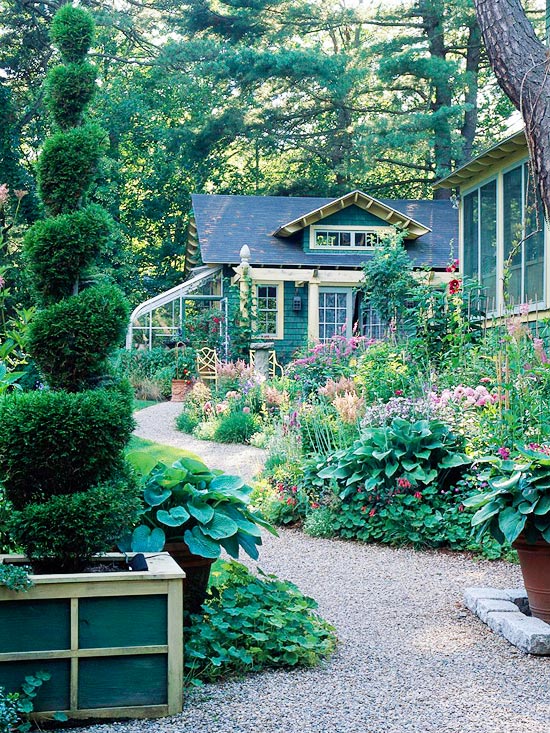
Enjoy Informality
Play up casual elements if you have a cottage-style home. Meandering paths, lush plantings, and bit of whimsy all contribute to a relaxed, cottage theme.
- Learn more about cottage garden style.
-
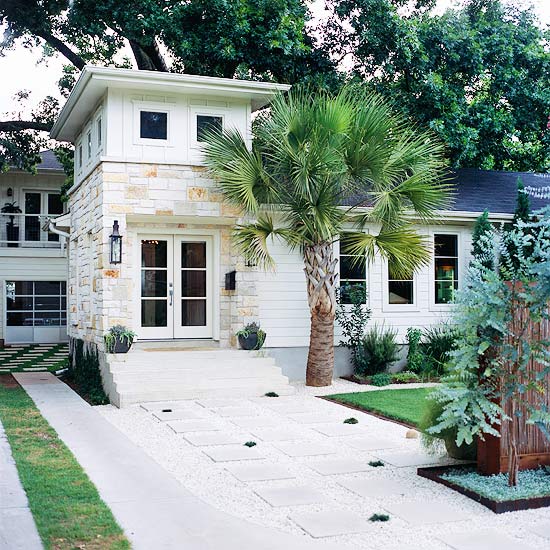
Contemplate Contemporary
Have some landscape fun if your home’s architectural style is contemporary. Incorporate geometric patterns and interesting materials (or more everyday materials used in a special way) to play up the drama.
-
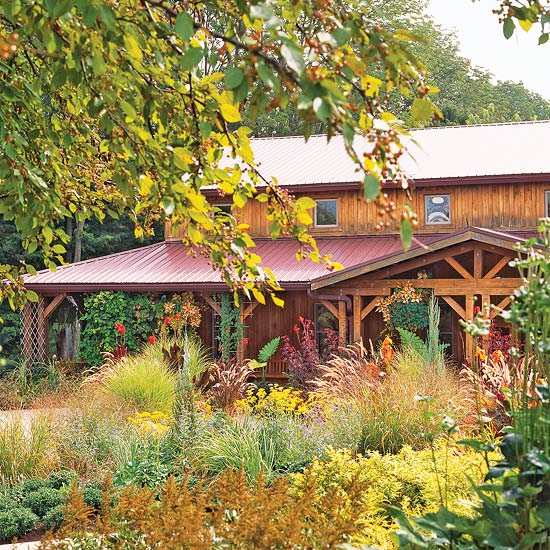
Pay Attention to Materials
After considering color and style, examine materials. Cedar siding looks great as a backdrop to a naturalistic landscape that utilizes native plants. Grasses tend to be particularly effective with wood tones because they echo the color in fall and winter.
-
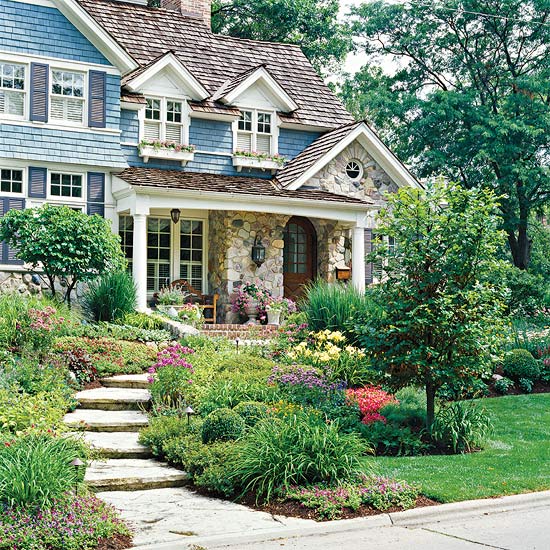
Use Repetition
Incorporate materials used on your home into your landscape to integrate the two. For example, if you have a stone facade, add a flagstone path. You can do the same thing with brick as well.
Another way to do this is to repeat siding in structures, such as a doghouse, or as an architectural accent on a gate or fence.
-
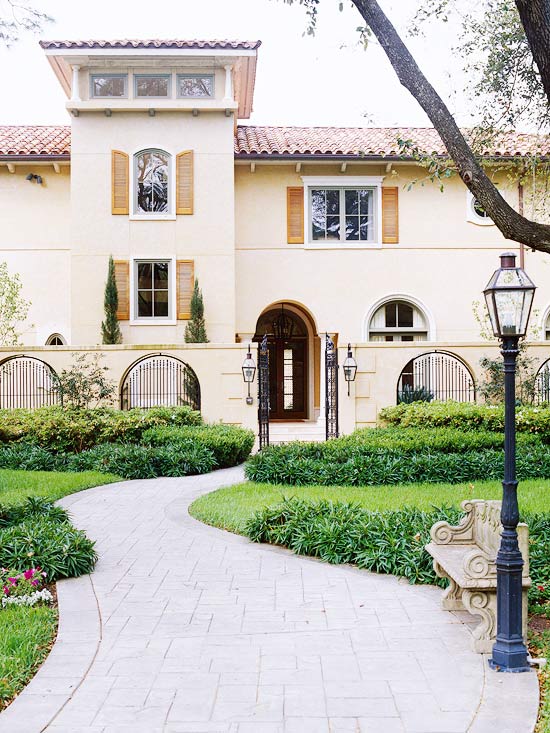
Accentuate Special Features
You can also use your landscape to play up special architectural details. For example, a collection of low, mounding plants helps highlight the “tower” on the front of the home shown here. A pair of columnar cypress planted in front of the home also draws the eye up.
-
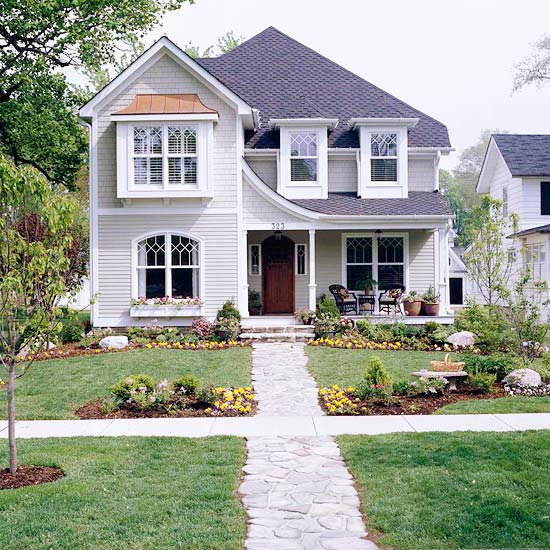
Repeat Shapes
Here’s another example of how you can work with an architectural feature. Note how the straight sidewalks and curves of the border against the house, here, mimic the lines of the main window on the ground level.
-
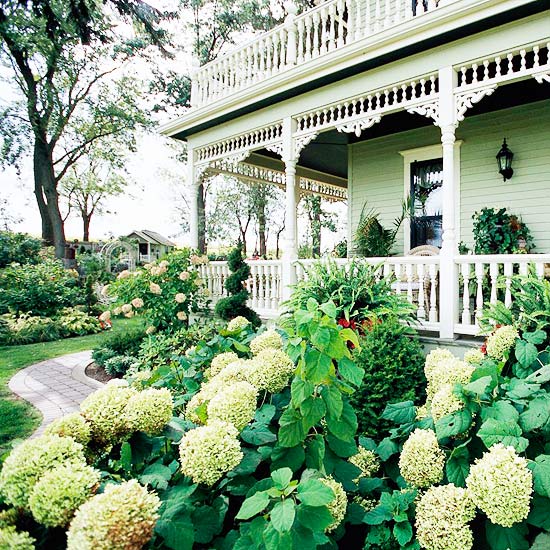
Match Your Plants
Architectural style gives clues on what types of plants to grow. For example, opulent peonies, hydrangeas, and old-fashioned roses fit well with Victorian homes. If you have a contemporary dwelling, try plants that have interesting structure, such as upright ornamental grasses.
-
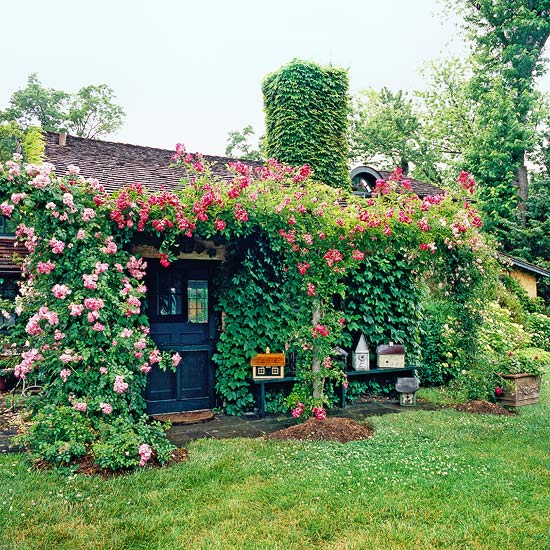
Soften Structures
Utilize plants to soften the look of your home and integrate it into the landscape. Lush climbing roses, for example, are a wonderful way to cover porch posts.
-
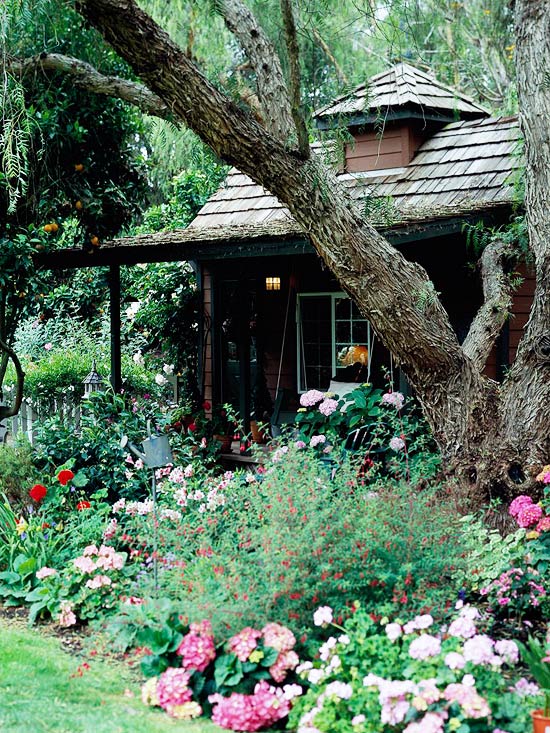
Create a Mood
Landscapes create a mood. Look to your home to determine the feeling you want to create. You can go big, bold, and formal for major appeal, for example. Or choose plantings that offer a cozy, intimate feel if you have a small house.
-
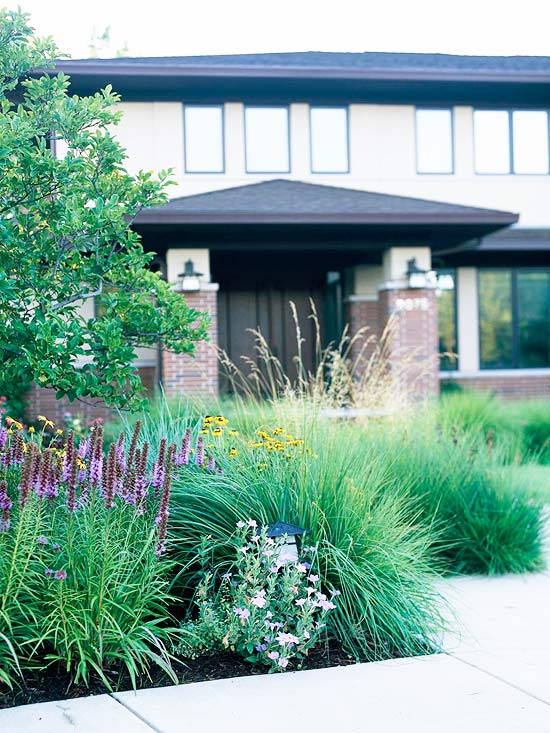
Highlight Contrasts
Another way to create impact is to use your landscaping to contrast your home’s architectural features. Soft-textured mounding grasses, for example, stand out against buildings that have a boxy shape or a lot of vertical lines.
-
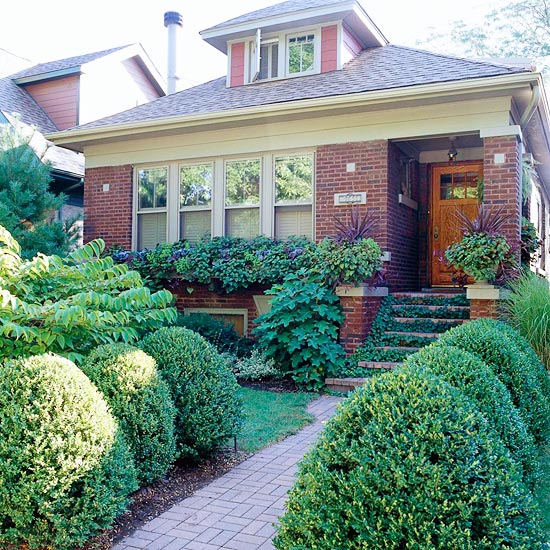
Employ Contrasting Shapes
Here’s another example of how you can use contrast to great advantage. Clipped boxwood mounds stand out against rectangular bricks and the boxy shape of the house. Their tidy form looks great with the neatness of the bricks.
- Discover other plants to grow as hedges.
-
More Great Curb Appeal Tips
See even more clever ways to boost your home’s curb appeal.
-
